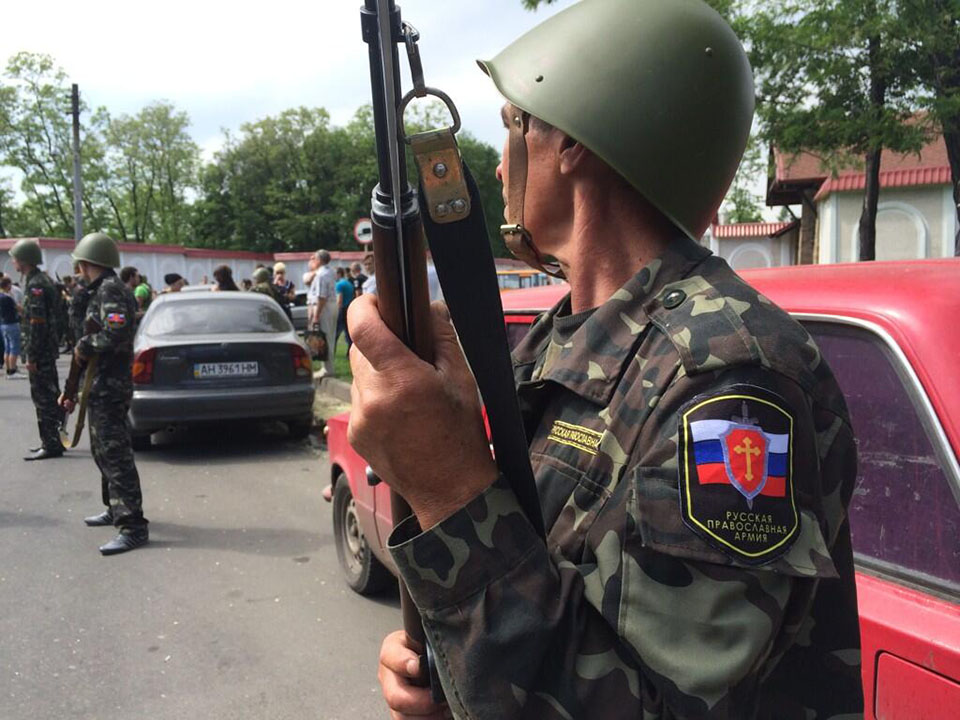Execution and torture videos
Probably the most shocking development in the ISIS crisis was the beheading of as many as five people, proudly videotaped and posted on the Internet. Those videos have sparked international outrage. An attempt to emulate such medieval atrocity was undertaken in the east Ukrainian town of Horlivka. The local “rebel” commander and suspected Russian intelligence operative Igor Bezler posted a video of alleged execution of two Ukrainian POWs with a threat to execute more each hour, unless Kyiv released captured separatist militants. This attempt at propaganda was later debunked by multiple sources. However, later Bezler at least once threatened to execute a British journalist attempting to interview him. Photos and videos with evidence of torture have appeared during the 6-month conflict. However, the video channels of the militants feature videos of tortured Ukrainian POWs quite often, one of the particularly gruesome being an interrogation of a dying Aidar fighter (warning, 18+). http://www.youtube.com/watch?v=p6mKwFFBm28 Humiliating prisoners on video is also widespread, as seen in the recent video published by The "Republic of Novorossiya" channel - a presumed Ukrainian volunteer fighter being tied to a lamp post in the East Ukrainian town of Zuhres. http://www.youtube.com/watch?v=vrru9QWTSP4Human rights abuse
While the “rebels” in Ukraine don’t have a habit of taping the worst of their atrocities, that doesn’t mean they do not happen. Human Rights Watch has documented widespread detainment and torture of civilians and members of the press by separatists. Evidence of executions has also surfaced with the discovery of a mass grave in the town of Sloviansk weeks after Ukrainian government reestablished control over the area. This widespread persecution of dissenting voices and journalists echoes ISIS activities in the captured regions of Iraq, if lacking in scale. Various evidence also suggests the separatists use human shields by establishing firing positions in residential buildings and shell residential areas to shift the blame on Ukrainian forces. Recently, the Security Service of Ukraine (SBU) began the process of identifying locations of concentration camps and mass graves created by the militants in Donbas and even placing them on a map. The advisor to the SBU drew a parallel with the events of twenty years ago in mass concentration camps in Srebrenica (Bosnia and Herzegovina), where violent and inhumane treatment was also performed, noting that the judiciary system has been replaced by retaliatory troikas that imprison people without charge or trial, torture them in basement cellars, and execute prisoners by shooting. Former POWs tell gruesome stories of their imprisonment, and militants themselves tell of terror, racketeering, rapes during interrogations.Religious fundamentalism
ISIS, like many other terrorist organizations, is motivated by a radical religious doctrine, attracting followers from all over the world. While ISIS’s particular brand of Islam has been condemned by Muslim clerics all over the world, they consider their religion the only true one and will not hesitate to brutally persecute followers of others. Again, we find striking similarities in the insurgency in eastern Ukraine, where one unit is actually called Russian Orthodox Army, bearing disturbing ties with ultra-orthodox nationalists in Russia-proper and being obsessed with “reconquering” of Ukraine. This fundamentalism, condemned by the Ukrainian branch of the Russian Orthodox Church, goes beyond rhetoric, with widespread evictions, kidnappings, murders and denial of worship against Protestants, Catholics and Ukrainian Orthodox worshippers independent from Moscow. According to New York Times, the rebels view “Orthodox Christianity as a force to unite these now divided Slavic lands and also their own fractured movement”.




